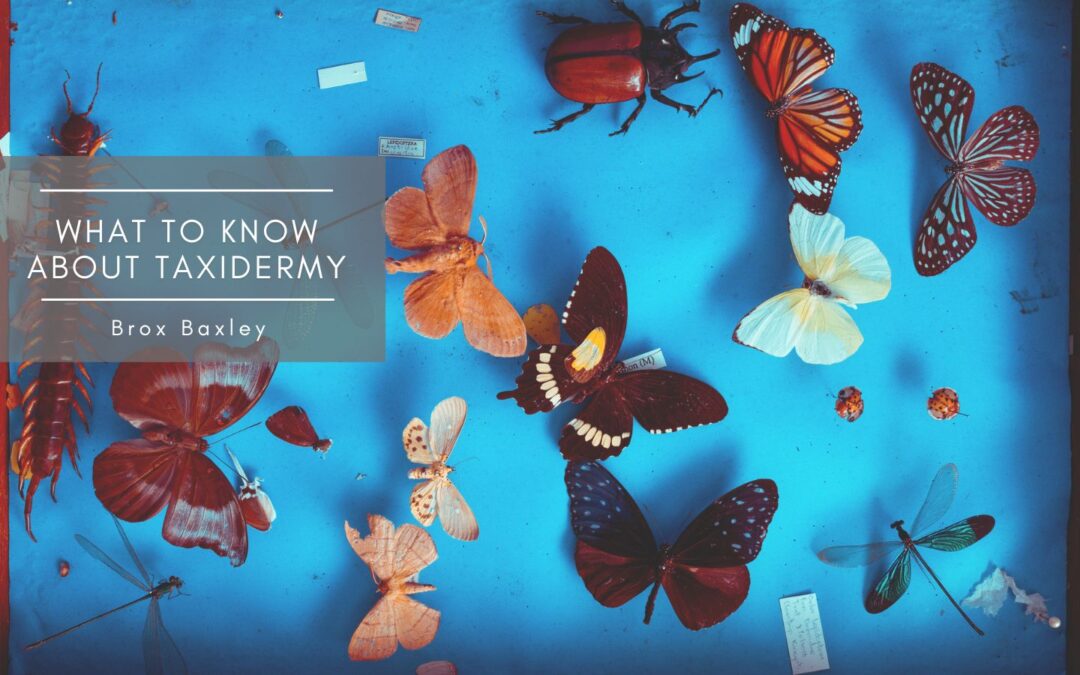Taxidermy has a history that is as rich as it is complex. While some view taxidermy as a means to celebrate and conserve nature’s beauty, others see it as an outdated or even unethical practice. The world of taxidermy is not just about hunting trophies or museum exhibits; it encompasses a deep understanding of anatomy, a commitment to conservation, and a respect for wildlife. This intricate craft requires meticulous skill and an appreciation of both the natural world and artistic expression.
Taxidermy’s history dates back to ancient times, with mummified animals in Egyptian tombs being among the earliest examples. However, it wasn’t until the 18th and 19th centuries that taxidermy began to evolve into its modern form, spurred by scientific curiosity and the expansion of natural history museums. Early taxidermists were often self-taught, using rudimentary techniques that did not preserve the animal’s appearance for long. The Victorian era saw a boom in taxidermy as a form of interior decoration, often without regard for the animal’s natural posture or environment.
In the 20th century, taxidermy became more sophisticated and lifelike, thanks to advancements in materials and techniques. This period also marked a shift in perception, with taxidermy increasingly seen as a tool for education and conservation. Museums began using taxidermy to create realistic wildlife displays that educated the public about animals and their habitats. The rise of conservation movements also led to stricter regulations on hunting and animal preservation, impacting the practice of taxidermy. Today, taxidermy exists in a complex space where art, science, ethics, and conservation intersect.
Skills and Techniques
Taxidermy is an intricate art involving a deep understanding of biology, anatomy, and art. The process begins with skinning the animal, a delicate task that requires precision to avoid damaging the skin. Next, the taxidermist removes all flesh from the skin, treating it with chemicals to prevent decay. Modern taxidermists use tanning techniques that give the skin flexibility and longevity.
The next step involves sculpting a form that replicates the animal’s body, often using materials like foam and wire. This stage is crucial as it determines the final pose and expression of the specimen. The skin is then carefully positioned and sewn over this form. Glass eyes replace the natural ones, and artificial teeth and tongues are often used to enhance realism.
The final step is grooming and painting, where the taxidermist adds finishing touches to achieve a lifelike appearance. This can include airbrushing to enhance color, styling fur, and positioning limbs. The goal is to create a specimen that is as realistic and natural-looking as possible, often requiring hours of meticulous work.
Ethical Considerations
The ethics of taxidermy are complex and often debated. Critics argue that it glorifies hunting and perpetuates a culture of animal exploitation. However, many modern taxidermists and enthusiasts counter this by focusing on conservation and education. They argue that taxidermy can foster an appreciation for wildlife and educate people about the importance of conservation.
Another ethical aspect involves the sourcing of animals. Ethical taxidermists often use animals that have died naturally or as a result of road accidents. They may also work with wildlife rehabilitation centers to preserve animals that could not be saved. The use of hunted animals in taxidermy is increasingly scrutinized, with emphasis on ensuring that any hunting complies with conservation laws and sustainable practices.
Legal considerations also play a significant role. Many countries have strict regulations regarding the taxidermy of endangered species and protected wildlife. Taxidermists must navigate these laws, which are aimed at preventing illegal poaching and trafficking of animals.
Role in Conservation and Education
Taxidermy plays a notable role in conservation and education. By bringing people face-to-face with wildlife, taxidermy exhibits in museums and educational centers can foster a deeper understanding and appreciation of animals, particularly those from distant or inaccessible habitats. This visual and tactile experience can be more impactful than photographs or videos, making wildlife more tangible and real to the public.
Moreover, taxidermy can aid in scientific research and education. Preserved specimens provide valuable information about species’ anatomy, evolution, and biodiversity. Taxidermied animals are also used as educational tools in schools and universities, offering students hands-on experience in studying animal biology.
In terms of conservation, taxidermy helps record species that may become extinct. These preserved specimens serve as historical records, offering insights into species that future generations may never encounter in the wild. Additionally, ethical taxidermy practices can promote wildlife conservation by sourcing from animals that died of natural causes, thereby not contributing to population decline.
Taxidermy is an art form steeped in history, skill, and ethical considerations. From its ancient roots to its modern practices, it has continuously evolved, balancing the line between artistic expression and scientific study. As we delve into the complexities of taxidermy, it’s clear that it’s more than just preserving animals; it’s about creating a bridge between humans and wildlife, fostering a sense of awe and respect for the natural world.
The ethical considerations surrounding taxidermy are significant and must be continuously addressed. The focus should be on conservation, education, and respect for the animals. By adhering to ethical practices and legal regulations, taxidermy can contribute positively to wildlife conservation and public education.

